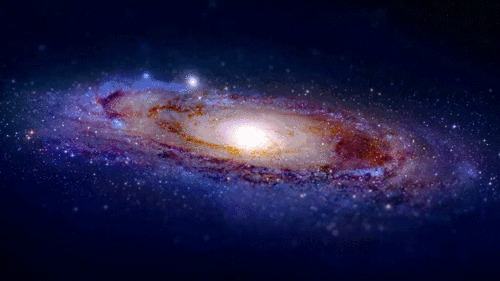The Enormous Scale of the Universe: A Cosmic Journey
Written on
The Beginning of Our Journey
Earth, often described as a fragile blue orb, is a minuscule entity in the expansive cosmic sea. It is here that every individual you’ve ever encountered has lived, along with every tale ever spun.
Continuing this exploration, we first venture beyond our atmosphere and past the Moon, embarking on a grand adventure to comprehend the size of our universe.
Section 1.1 The Moon: Our First Destination
The Moon marks the initial point in our exploration of space. Positioned approximately 384,000 kilometers from Earth, it would take over 160 days to reach it if traveling at a constant speed of 100 kilometers per hour. From this perspective, our planet appears as a delicate sphere of blues and greens, set against the vastness of the cosmos.

Section 1.2 The Sun: A Star of Life
Next, we focus on the Sun, located merely one astronomical unit from Earth—approximately 150 million kilometers. At the speed of light, it takes about 8 minutes and 20 seconds for sunlight to travel this distance. If you were to undertake this journey in a commercial airplane flying at 900 kilometers per hour, it would take nearly 19 years.
These staggering distances within our solar system reveal just how immense space truly is. The Sun, a colossal sphere of nuclear fusion, serves as our planet's primary energy source.
Section 1.3 Mars: The Red Planet
Continuing outward, we encounter Mars, the fourth planet from the Sun and known for its reddish hue. The distance to Mars varies significantly due to its elliptical orbit, ranging from as close as 54.6 million kilometers to as far as 401 million kilometers. Traveling to Mars in an airliner would take over 50 years, which is why we rely on robotic missions for exploration. These missions have provided invaluable insights into Mars' geology, atmosphere, and the potential for life.
Chapter 2 The Outer Solar System
The quest continues as we look at Neptune, a frigid ice giant located a staggering 4.5 billion kilometers from Earth. Sunlight takes 4 hours and 15 minutes to reach Neptune, illustrating the vast scale of our solar system.
The Voyager 1 probe, launched in 1977, epitomizes humanity's quest for knowledge beyond our planet. Currently over 22 billion kilometers away, it remains the most distant human-made object, silently traveling through the cosmos. At the behest of Carl Sagan in 1990, Voyager 1 captured one last image of Earth, which has become known as the "pale blue dot," a poignant reminder of our planet's insignificance in the vast universe.
Section 2.1 The Oort Cloud and Heliopause
The Oort Cloud, a theoretical sphere of icy objects, extends up to 100,000 astronomical units, roughly 1.9 light-years from the Sun. This boundary marks the transition from our solar system to interstellar space, where the solar wind ceases, and the influence of the Sun diminishes.
Beyond our solar system lies Alpha Centauri, the closest star system, located four light-years away. Even at Voyager's maximum speed of 17 kilometers per second, it would take over 70,000 years to reach this neighboring star.
Section 2.2 The Milky Way and Beyond
The Milky Way galaxy spans about 100,000 light-years and hosts hundreds of billions of stars, likely with their planetary systems. The human radio bubble extends about 100 light-years from Earth, signifying the farthest reach of our broadcasts, beyond which humanity's presence fades into the void.
The Local Group encompasses more than 50 galaxies, stretching across approximately 10 million light-years. Venturing further, we encounter the Virgo Supercluster, a colossal assembly of galaxy groups, with our Local Group nestled within it.
A breathtaking structure, the Laniakea Supercluster, extends over 500 million light-years and contains a mass equivalent to 100 million billion suns. This gravitational marvel binds countless celestial bodies in a cosmic web.
Chapter 3 The Expansive Observable Universe
The observable universe is estimated to be 13.8 billion years old and spans 93 billion light-years in diameter. Since the Big Bang, the universe has expanded, with some regions receding faster than light, rendering them permanently out of view. Consequently, the full extent of the universe remains a mystery, possibly infinite. The observable universe, vast as it is, may merely be a small portion of a much larger cosmic expanse.